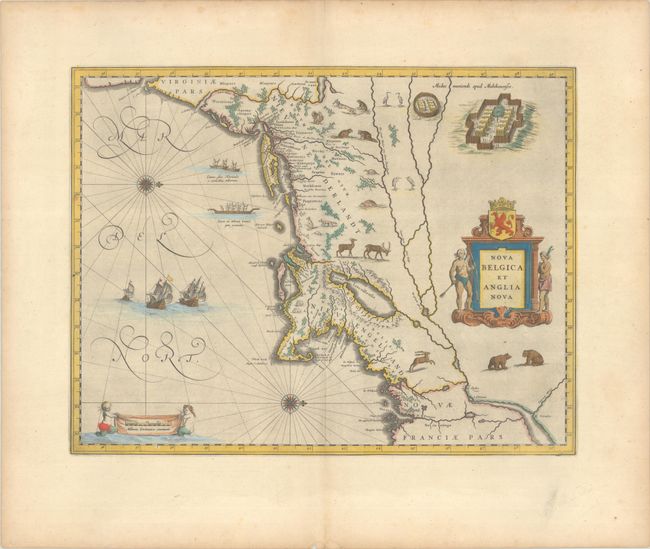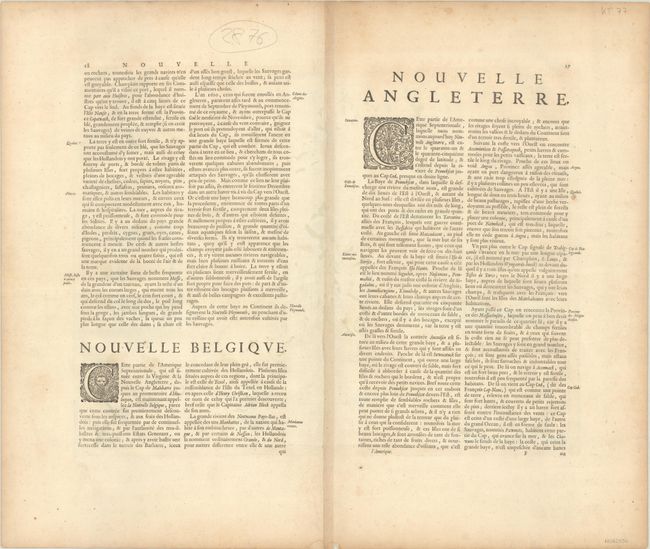Subject: Colonial New England & Mid-Atlantic United States
Period: 1663 (circa)
Publication: Le Grand Atlas
Color: Hand Color
Size:
19.9 x 15.3 inches
50.5 x 38.9 cm
This important map, first issued in 1635, is one of the first to focus on the Dutch colony in North America and to name Nieu Amsterdam (New York). It is based on the manuscript of Andriaen Block (1614), a Dutch fur trader, who explored the area between Cape Cod and Manhattan and was the first to correctly delineate the longitudinal scale of the coastline and establish Manhattan as an island. The colony of Nieu Pleimonth is identified, as well as other English names along the coast, which were derived from Smith's map of New England in 1616. The map is oriented with north to the right and is richly adorned with a variety of wildlife, including the first appearance of beavers, polecats and otters on a printed map. Quebec is noted with a minute depiction of the fort and buildings, and the mythical kingdom of Norumbega is noted near the R. Pentagouet (Penobscot River) in present-day Maine. A large Mohawk village is shown derived from the White-de Bry engravings. It is further embellished with a large title cartouche flanked by two natives, sailing ships, canoes, and compass roses. French text on verso, published circa 1633.
References: Burden #241; Goss (Blaeu) p. 164; McCorkle #635.1; Van der Krogt (Vol. II) #9310:2.
Condition: A
A dark impression with contemporary color in the map and later color in the decorative elements, on a bright sheet with a large watermark of the god Atlas. There is light printer's ink residue, two small worm holes in the map border and marginal soiling.



